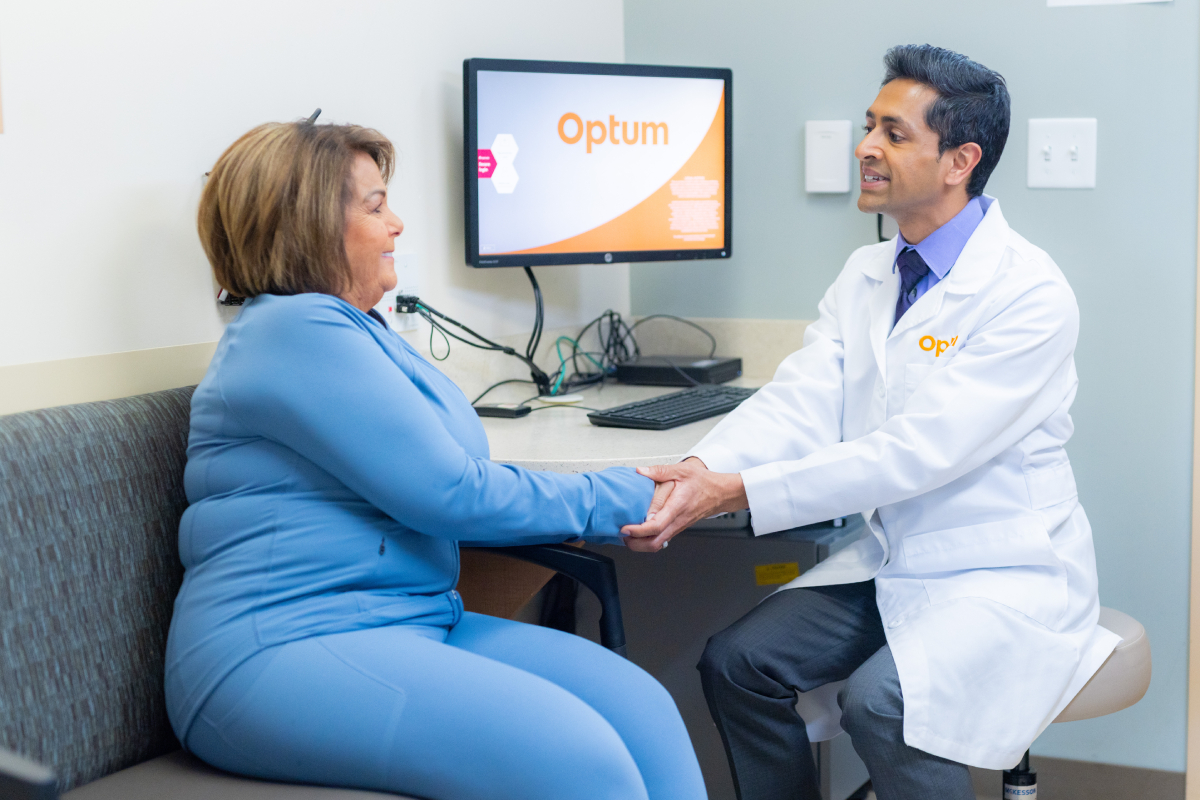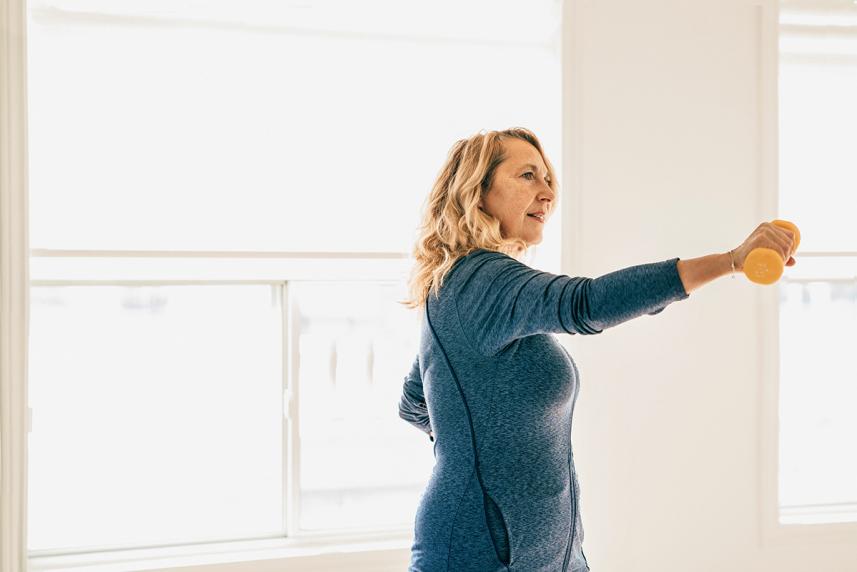
How to stay strong and independent in just 10 minutes a day

Gentle resistance exercises are key for maintaining strength and balance. Here are five moves to try.
There are certain activities that are part of living an independent life: climbing stairs, getting up from a chair, bending over, standing at the stove. If you don’t have enough strength and stamina, even these basic tasks can become challenging.
“As we age, we often lose some of our strength and mobility,” says Morven Malay, physical therapy lead at Optum Health. This is a normal age-related change, she adds.
The good news is that there’s plenty you can do to help build and maintain the strength you need to stay independent. Gentle muscle strengthening exercises are key. The best part? Even just 10 minutes a day can help. And you can do it at home, no weights required. Here’s what to know and how to get started.

The benefits of getting stronger
Strength training helps you maintain and improve your ability to do daily activities, says Malay. “It can also help prevent falls and serious injuries from falls.” Plus, it may improve your overall bone and joint health.1
Muscle strengthening activities should be one part of your overall physical activity plan. According to government guidelines, people ages 65 and older need:
- At least 150 minutes a week of moderate-intensity activity (such as brisk walking or swimming).2 Or 75 minutes a week of vigorous-intensity activity (such as hiking, running or playing tennis). Aerobic activity helps keep your heart and lungs healthy.3
- At least two days a week of muscle strengthening activities.3
- Balance and flexibility exercises, such as standing on one leg or walking backward. (Yoga and tai chi are good options too.) These can help you avoid falls and make everyday activities easier.2, 3
Below are five strength exercises you can add to your weekly fitness routine. Malay recommends doing each exercise three times per week for the most benefit. Pick two or three to create a quick, effective 10-minute routine.
If you have any pain or chronic conditions, be sure to check with your doctor before starting resistance or balance training. They can tell you if any moves are unsafe.
Strength exercise #1: Sit-to-stand
This is an excellent exercise for strengthening the leg and core muscles, says Malay. Regularly practicing this movement can help you maintain your ability to get up and down stairs or on and off surfaces such as the toilet. It can also help you build or maintain balance to lower your risk of falling.4 Here’s how to do it:
- Sit in a chair with both feet flat on the ground and about shoulder width apart. You may need to sit toward the front edge of the chair to get your feet flat on the ground. Make sure the chair is stable.
- Reach your arms forward and lean forward slightly at your waist. Push into your feet to come to a standing position. As you stand, lower your arms to your sides.
- Pause briefly. Then return to sitting by moving your hips back and leaning forward at your waist as you raise your arms in front of you.
- Keep your movements slow and controlled.
- If you can’t stand without support, try pushing on your thighs with your arms, or use a chair that has armrests.
- Do three sets of 15 movements, or build up to this goal as you feel comfortable.
Strength exercise #2: Tandem stance with support
Malay says this is a great exercise to strengthen the lower leg and foot muscles and improve balance, which tends to be more challenging with age. To start, all you need is a countertop or sturdy chair.
- While standing, hold on to the chair or countertop for support and safety.
- Keep your right foot planted on the ground. Bring your left foot to the front of your right foot. Your right toes and left heel should touch.
- Balance for 30 seconds.
- Return to the starting position. Then repeat by switching feet.
- If you’re having trouble, set your feet apart slightly so that your base of support is wider, instead of touching heel to toes.
Do this four times, alternating which foot is in front.
Did you know that your Optum Care doctor can help you create an exercise plan that’s right for you? And refer you to specialist too? Find an Optum doctor.
Strength exercise #3: Calf raises
This exercise works the lower leg and foot muscles. Your body relies on these muscles for balance during daily movements and walking on uneven surfaces, Malay says.
- Stand with your feet about shoulder width apart, holding on to a stable chair or countertop for support.
- Raise up onto your toes as you lift your heels off the ground.
- Hold the top position for two seconds, then return your heels to the floor.
- Keep your movements slow and controlled. Do three sets of 15 movements, or build up to this goal as you feel comfortable.
Strength exercise #4: Standing hip abduction
Malay says this exercise targets the leg and core muscles, especially the hip muscles (or abductors). These muscles help with balance and walking on uneven surfaces.5
- Stand with your feet about shoulder width apart, holding onto a stable chair or countertop for support.
- Lift one leg out to the side and slightly behind you in a diagonal motion. You only need to lift your leg a few inches. Don’t lift your leg so high that your trunk moves or twists. Try to keep your knee straight and toes pointed forward as best you can.
- Hold for two seconds.
- Lower your leg back down to the floor. Keep your movements slow and controlled. Do three sets of 15 movements per leg, or build up to this goal as you feel comfortable.
Strength exercise #5: Banded rows
This exercise strengthens the muscles in the upper back, shoulders and core, which help with posture and balance, Malay says. All you need is an inexpensive resistance band. This is a stretchy, elastic workout band that can help build muscle strength.6
- Tie a knot in the middle of the resistance band. Place the knot on a doorknob and shut the door on it, making sure the band is secure. (The knot should be on the opposite side of the door as you.)
- Hold the ends of the elastic band with both hands and step back until your arms are straight.
- Use your arms and muscles in between your shoulder blades to pull the bands back. Bend your arms to bring your elbows to your sides. Focus on squeezing your shoulder blades down and together.
- Hold for two seconds. Return to the starting position. Keep your movements slow and controlled.
- Do three sets of 15 movements, or build up to this goal as you feel comfortable.
Not sure how strong your muscles really are? Talk about it with your Optum doctor or care team. They’ll be able to do a quick check of your physical fitness. They may ask you questions like:
- How do you feel about your physical health today as compared to last year?
- Does your health keep you from doing things like using the stairs or cleaning the house?
- Have you had any problems in these areas over the past month?
Then they can discuss next steps with you, whether it’s working with a physical therapist or training on your own. That’s all part of the benefit of being an Optum patient.
Sources
- Centers for Disease Control and Prevention. Benefits of physical activity. Last reviewed August 1, 2023. Accessed November 28, 2023.
- Centers for Disease Control and Prevention. How much physical activity do older adults need? Last reviewed April 13, 2023. Accessed November 28, 2023.
- National Council on Aging. The life-changing benefits of exercise after 60. Published August 30, 2021. Accessed November 28, 2023.
- National Council on Aging. What exercises can help you prevent a fall? Published June 2, 2023. Accessed November 28, 2023.
- Journal of Biomechanics. Effects of aging on hip abductor-adductor neuromuscular and mechanical performance during the weight transfer phase of lateral protective stepping. Published January 3, 2019. Accessed November 28, 2023.
- American College of Sports Medicine. Resistance training for health. Published 2019. Accessed November 28, 2023.
© 2024 Optum, Inc. All rights reserved. Do not reproduce, transmit or modify any information or content on this website in any form or by any means without the express written permission of Optum.
The information featured in this site is general in nature. The site provides health information designed to complement your personal health management. It does not provide medical advice or health services and is not meant to replace professional advice or imply coverage of specific clinical services or products. The inclusion of links to other web sites does not imply any endorsement of the material on such websites.
Consult your doctor prior to beginning an exercise program or making changes to your lifestyle or health care routine.
Stock photo. Posed by model.



